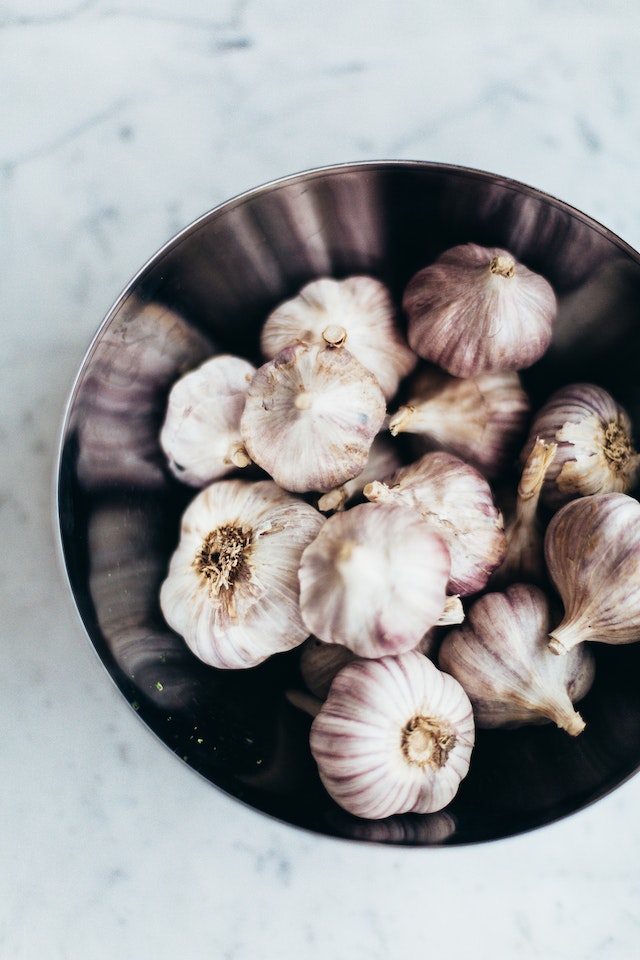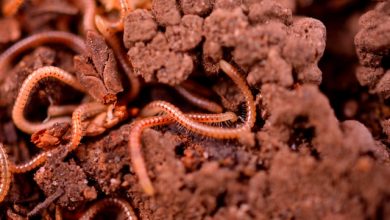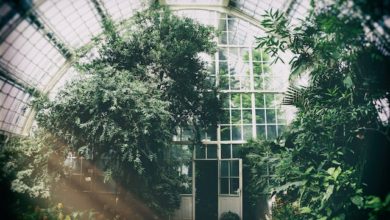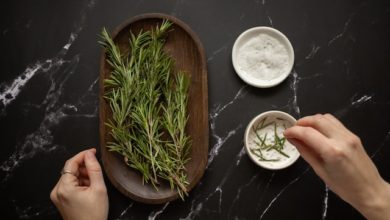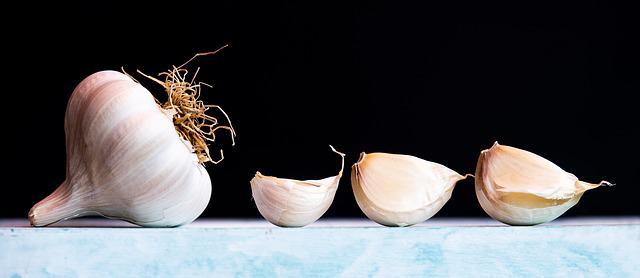
How to Harvest Garlic
The time to harvest, cure and store the garlic that you planted last fall since summer is here.
Additionally, to plant again this fall, you need to select the best bulbs from your harvest. A tasty and incredibly easy crop to plant in your backyard garden is garlic.
Apart from being one of the most healthy and nutritious crops around, garlic has an incredible flavor that you can add to all kinds of dishes. Moreover, you can always have a home-grown supply on hand since garlic can easily be cured and stored for year-round use.
How To Harvest, Cure and Store Garlic
When garlic begins to brown and die back it needs to be harvested. Garlic is always ready to dig up once its stalks have browned to about half and two-thirds of their size.
However, before harvesting your garlic, it is extremely important to make sure the soil is as dry as possible. This is because the protective skin around the garlic can easily be damaged if the soil is too moist hence leading to a crop that will not store well.
How To Harvest and Cure Garlic
Harvesting garlic is a simple process as long as the soil is dry.
- Dig down gently 3 to 4 inches behind each stalk using a shovel or pitchfork. After that, with the bulb still intact in the soil, gently lift it. When bringing the stalk out of the soil it is important that you do not pull or yank on them. This is because until the bulb completely cures, the stalks need to be kept in place.
- Each garlic bulb should have any soil clumps gently removed, taking care to protect its papery outer edges. These are currently soft, but they will eventually dry out to form the coat that will protect the garlic while it is being stored.
Curing – The Process
The simple process of hardening the garlic, and preparing it for long-term storage is known as curing. After step 2 above, the next step is to cure your harvested garlic.
You can use any of your freshly harvested garlic as soon as you want. However, you will need to cure your garlic if you want to keep it for long-term use.
Hang up the garlic, stalks, and all in an area out of direct sunlight when curing. They can be strung up singly or in clusters of five to ten bulbs that are fastened together.
Pick a spot that has good airflow and won’t get too warm during the day. If there is some airflow, a shed, garage, or barn with rafters all make excellent sites. To fully cure garlic, it will take around two weeks. As soon as the bulbs have dried to the touch and have a hardened exterior, they will be ready to store.
Storing Garlic Long Term
Remove the stalks to about an inch above each garlic head once this occurs.
The garlic heads should be kept in a cool, dark, and dry place. Some of the best places in your home that are not damp and you can use to store the garlic heads include basements and root cellars.
Garlic can store and used for up to a year or more when the storage conditions are good.
Selecting Bulbs for Fall Planting
The moment has come to decide which of your harvested bulbs will be planted this fall as well. A garlic head contains seeds in each clove. 8–12 seeds can be produced by a typical garlic head.
When selecting garlic heads from your harvest for planting this fall, you should select the largest, healthiest, and most robust. The better the bulbs of your garlic will become the more they become accustomed to the soil they have grown it.
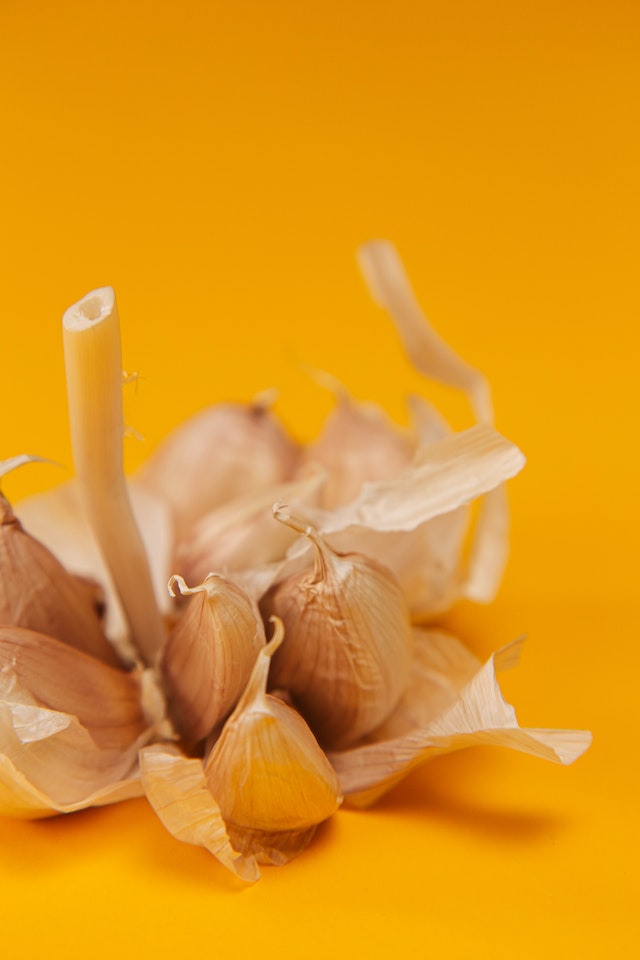
Now is a great time to get seed stock for planting if you do not currently grow garlic but you want to start. Until it is time for planting in the fall, you should keep the bulbs you have selected intact and keep them stored in the same manner as the rest of your harvest.
Here is to harvesting, curing, and storing your delicious crop of garlic!
1. How do you know when garlic is ready to harvest?
When the bottom two leaves have dried and a third is on its way it is a clear indication that your garlic is ready to pick. “The soil bacteria could have eaten up the first leaf and therefore it may be hard to see,” he explains. “There will be plenty of green leaves, but do not let this stop you when it is time to harvest.”
2. Does garlic need a lot of water?
Both too much and too little water can stress plants and induce bulb rot, respectively. Garlic needs between a half-inch and an inch of water each week on soil with good drainage.
Use additional watering to make up the deficit if there is less than a half-inch of rain in a week. Watering deeply but infrequently is preferable.
3. How do you increase garlic yield?
Before the garlic scrapes in late spring or early summer, stop supplying nitrogen. At this stage, too much nitrogen may promote excessive leaf growth at the expense of bulb growth. Potassium (K) is a crucial vitamin as well. Potassium enhances garlic bulb growth and overall yield.
4. How long do you dry garlic after picking?
Garlic can be cured in a variety of methods, but it is important to do it correctly. Generally, place clean garlic in a spot with sufficient airflow that is shaded from the sun.
Garlic takes roughly two to three weeks to fully heal. Even though the flavor has not fully formed, it can be consumed at any time after harvest.
5. What month is best to pick garlic?
The best time to plant and harvest garlic is in the fall, between late September and early November (between June and August). Plant garlic cloves in locations that have a strong frost six to eight weeks before the first date of the frost, before the ground freezes.
6. What happens if you leave the garlic in the ground too long?
The over-mature bulbs may break open if they are kept in the ground for too long, making them vulnerable to fungi and dehydration. Perhaps there are loose, loamy soils out there that would allow garlic to be lifted out of the ground by the tops without damaging any systems.
7. Does garlic like sun or shade?
Choose a planting location that receives six to eight hours of direct sunshine each day because garlic grows best in full sun. Add a good helping of compost or old manure to the soil about a week before planting.
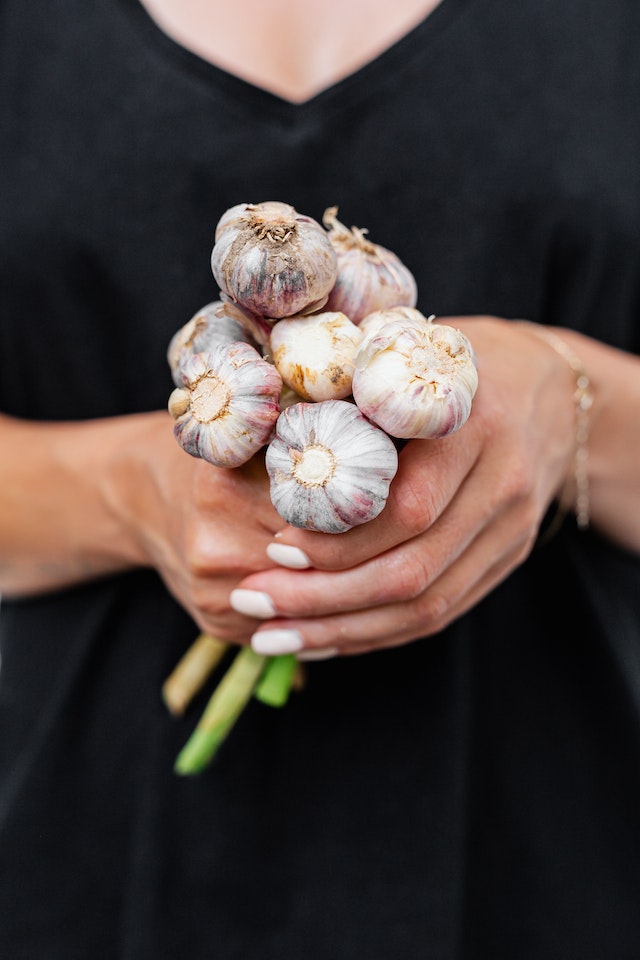
8. Should I trim my garlic leaves?
You can eat the lovely spiral stems that grow above your garlic in June. You can increase your garlic harvest by getting rid of them. Your garlic plant will start to send up a stalk from the middle in early to mid-June.
9. Can you eat garlic straight out of the ground?
Yes, you can prepare or sauté newly picked garlic straight away. Garlic can also be consumed uncured.
Setting aside a few bulbs of garlic that you will consume within three weeks and curing the remaining bulbs so they will store for several months is a good method to divide your produce.
10. Where do you hang garlic to dry?
While some of the leaves are still green and pliable, braid the garlic and hang the bundle to dry in the shade. A pantry or a kitchen nook are a couple of the places in your house you might use.
11. What happens if you harvest garlic too early?
Knowing when to harvest garlic is crucial because if you dig it up too soon, the bulb will be little, and if you dig it up too late, the bulbs will be divided and unfit for consumption.
12. How do you store garlic for a long time?
Garlic cloves should be kept whole and in an airtight container or bag in a cool, dry area (such as a mesh bag or loosely woven basket). Keep it out of the sun in your pantry or a basket on your counter.
13. Should I stop watering my garlic before harvest?
Garlic naturally senses when the soil is dry that it’s development and the bulb-filling season are ending. This means that one to two weeks before harvesting the garlic bulbs, you should stop watering your crop of garlic.
14. Can you plant garlic in the same place every year?
There isn’t a treatment for rust, so the only thing you can do is stop growing garlic in the same spot for three years.
White rot, which destroys the roots and ultimately the bulb of garlic, is another issue that can impact it. Again, crop rotation is the only known treatment.
15. Can I freeze garlic?
Garlic can be quickly frozen in an airtight container, a freezer-safe bag, or specially constructed Mason jars. This is applicable to all varieties of garlic, including whole garlic bulbs (also known as garlic heads), peeled or unpeeled cloves, chopped or minced cloves, and unpeeled or peeled bulbs.
16. Should I fertilize garlic?
Early in the spring, fertilize garlic by disseminating or side dressing it with blood meal, pelleted chicken dung, or another artificial source of nitrogen. just before the bulbs start to swell as a result of the extending day. Early May is typically the time for this. One more light fertilization.
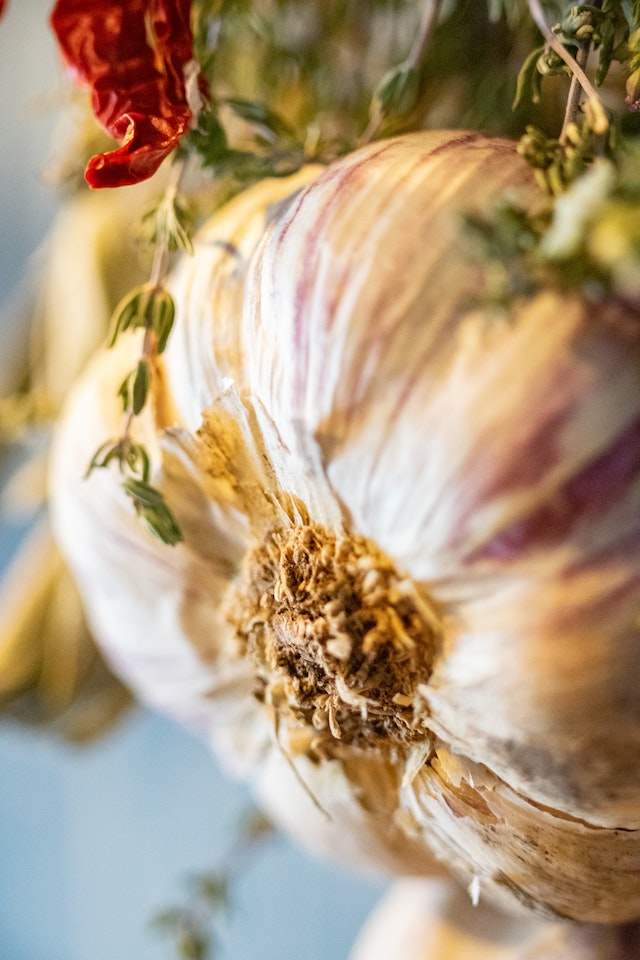
17. Does garlic grow back every year?
Garlic planted in the fall frequently produces a few leaves before winter, then stops growing in December and into February. When the cold subsides, it will pick up speed once more and continue to expand until early summer, when flowering stalks will start to emerge.
18. What can you plant in bed after garlic?
Time-wise, rutabagas direct-seeded into an allium-occupied bed also yields good results. Tomatoes and peppers are also suitable plants to put after garlic or onions in regions with long growing seasons. Chinese cabbage or bok choy may be the ideal option in colder climes.
19. Is it Ok to plant garlic next to tomatoes?
For a fresh salsa from the garden, planting garlic between the tomatoes makes it much simpler to gather both at once.
Both the tomatoes and the spring garlic crop can be harvested at the same time if you plant them roughly a month before you sow the tomatoes.
20. Are coffee grounds good for garlic?
Garlic prefers an acidic soil pH, so if you have any leftover coffee grounds, sprinkle a few on top of the clove to aid with growth.
However, this shouldn’t be a problem if you are not planting the garlic close to a sidewalk, a foundation, or in a rocky location.
21. What happens if you eat garlic every day?
The final result. Garlic is very nutrient-dense and linked to a number of health advantages. The downsides of eating too much of it, meanwhile, include poor breath, acid reflux, digestive problems, and an elevated risk of bleeding.
